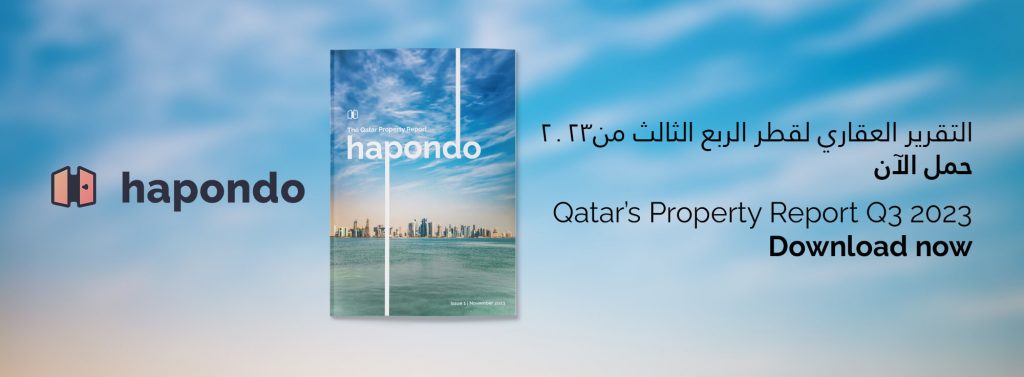Following the global success of the FIFA World Cup 2022, Qatar’s real estate sector has continued to be resilient this year, driven by infrastructure development, quality supply of properties, and property seekers’ appetite.
This is specifically true for residential real estate, which accounted for at least 55% of transaction volume in Qatar in 2022, according to our analysis of Ministry of Justice data. This share has risen from just 25% in 2010.
Our latest publication, hapondo: Qatar’s Property Report, looks at real estate trends that have been shaping the sector over the last few years. Find out key information in the market such as median prices for apartments, villas, offices, warehouses, and shops in Qatar.
Here are several key themes from the report:
The preference for living outside the city
Living outside the city has its allure, from the luxury of space to the availability of developable land. Yet this only makes sense if people can move between business districts and the fringes more easily.
Infrastructure development has significantly improved accessibility between the city and areas outside the boundaries of Doha and business districts. For the FIFA World Cup alone, 1,791 km of expressway projects were completed as reported by Ashghal.
According to our analysis, real estate transactions from Al Rayyan, Umm Slal, Al Wakrah, and Al Daayen accounted for approximately 53% of the volume in 2022. Their share has been larger in land transactions, covering 71% of volume.
We can see this very clearly in villas. Seven of the 10 most popular areas people searched on hapondo in Q3 2023 for villas for sale are found on the outskirts of the city.
Convenience is king
Still, the city remains popular for people who want to be closer to economic activities. For people living in the city, the appetite for leasing apartments will be largely driven not just by budgets but also by convenience. Three in every four apartments for rent and 31% of villas for rent in hapondo are furnished.
Interestingly, hotels are also now seeking a greater share of the residential leasing market, targeting lessees who are searching for hotel-like services and amenities.
Apartment rental yields remain competitive
Gross rental yields in the apartment sector continue to be healthy at approximately 6.5%. In West Bay, rental yields range between 6.5% and 7.6%, while The Pearl’s run between 5.4% and 6.4%.
Doha’s apartment yield is higher than in several cities in the GCC, such as Riyadh and Muscat, and in Europe, where yields are below 5%.
Is flex space the future of the office?
Remote work has significantly affected the demand for office space globally. For tenants who still need an office, an option to avoid spending on fit-outs is an attractive proposition. This is one reason why flex office spaces – ranging from co-working concepts to serviced offices — are now looking for options to avoid spending on fit-outs, and they see flex office spaces (ranging from) as a solution to their corporate real estate requirement.
Rents at flex office spaces are significantly higher than core-shell, but their offer for a plug-and-play solution has been attracting many companies in Qatar.
Fill Out the Form Below to Instantly Access Your Copy of the Report
